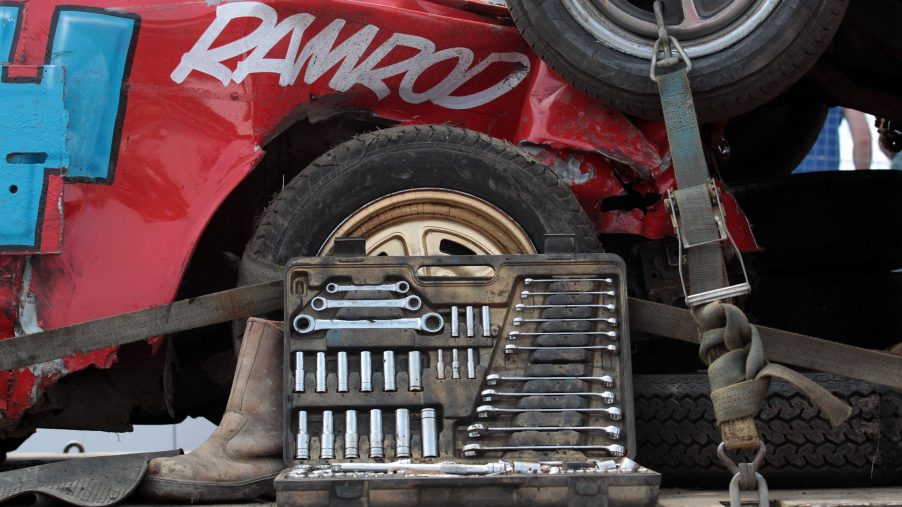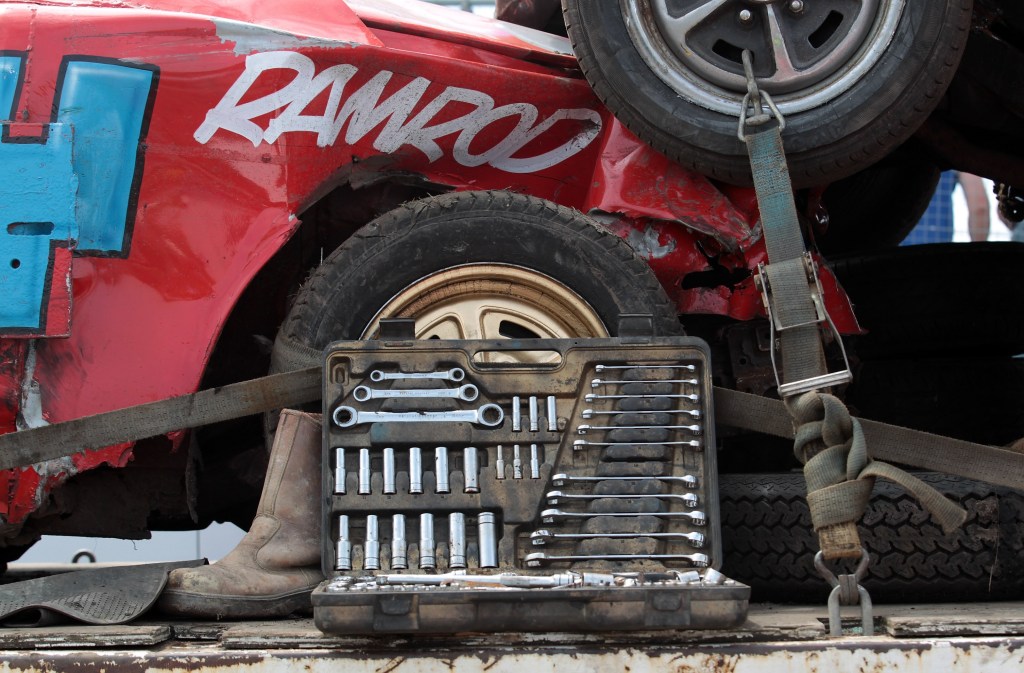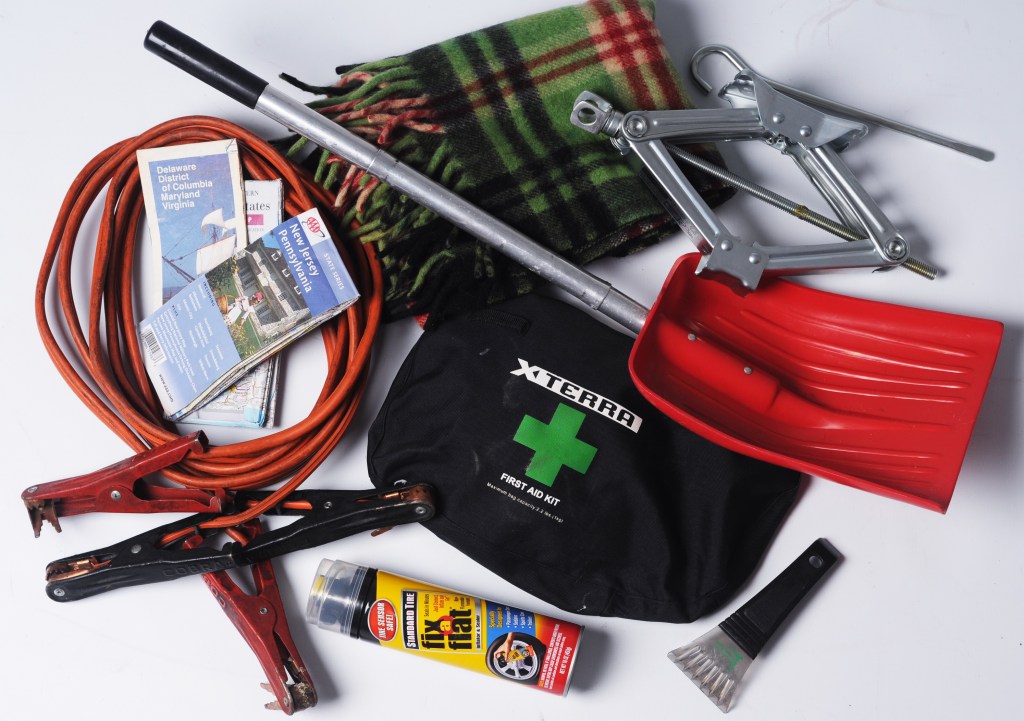
What Should You Keep in Your Emergency Car Tool Kit?
Not all automotive emergencies are as severe as getting stuck in the snow or crashing into a ditch. Still, if you’re in a hurry and get a flat tire, knowing that ‘it could be worse’ isn’t helpful. Neither is thinking of all the tools and accessories in your garage—where you aren’t. However, there is a simple solution: keep an emergency tool kit in your car. Here’s how you can construct your own.
Even if you don’t travel far, these tools belong in your car kit

Since no car is as spacious as a garage, an emergency tool kit can’t hold all the contents of a home toolbox. As such, it won’t cover every possible issue you could come across on the road. But a travel-sized kit should contain enough all-purpose tools to address common ‘quick-fix’ problems. Things like flat tires, dead batteries, loose trim, lack of fluids, etc., that don’t necessarily kill a car but rather strand it temporarily.
You can often buy ready-made emergency car tool kits in auto-part stores and online. However, in many cases, these pre-made emergency kits lack one or two things. And some kits only contain one copy of a specific tool, such as a screwdriver. While that’s often enough, I recently had a short-throw shifter malfunction that required two screwdrivers to fix. Yes, cargo space is limited, but a screwdriver takes far less space than, say, an air compressor.
With that in mind, consider putting the following items in your emergency car tool kit:
- Jumper cables or portable jumper pack
- Screwdrivers (flat-head and Philips)
- Multi-bit screwdriver
- Pliers (needle-nose and locking/vise-grip)
- Adjustable wrench
- Tire wrench with appropriate lug-nut socket
- Car jack
- Tire-pressure gauge
- Spare tire and/or tire sealant
- Flashlight
- Emergency reflectors
Keep in mind, this is a basic emergency car tool kit that you can freely add to. Autoweek, for example, recommends including some extra sockets, a breaker bar, and a hammer for stubborn lug nuts. Also, some of these items may already be in your car. Even if your car doesn’t have a full-size spare tire, for instance, it likely still has a fold-up jack.
Modify your car’s emergency tool kit as conditions, seasons, and trip distances change
Speaking of adding things, as with your home toolbox, your emergency car tool kit should reflect your vehicle’s needs. And those needs change with the calendar as well as your driving habits.
As of this writing, the US is in the middle of winter. For many residents, that means regularly dealing with snow- and ice-crusted windows. So, your car tool kit should include an ice scraper and a brush, either separately or in one combo tool. Also, consider carrying some extra windshield washer fluid in case you run out. And if there are truly horrible conditions on the horizon, keep a winter survival kit in your car, too.
Admittedly, not every driver regularly encounters deep snow, but they may if they go on a long-distance road trip. However, even if your trip plans don’t involve arctic weather, changing how far you drive also means rethinking your emergency tool kit. After all, if you’re just driving around town, you usually have easy access to stores and towing services. But if you’re out on a random highway or in the middle of nowhere, neither are viable options.

Therefore, if you’re traveling longer distances, expand your emergency car tool kit. It’s especially important if your car is getting on in years. When I go on road trips, I usually add the following things into my trunk:
- Fuses
- Spark plugs
- Bulbs
- Zip ties
- Duct tape and/or electrical tape
- Coolant
- Oil
- Brake fluid
- Air pump
As with the ‘generic’ emergency car tool kit contents, feel free to bring other items along on your trip. Autoweek recommends putting transmission fluid, a radiator stop-leak product, and shop towels in your kit, for example. In addition, for safety/cleanliness purposes, consider shoving some safety glasses and protective gloves in your kit.
Don’t just have tools—know how to use them
There’s something else that belongs in your emergency car tool kit, though: knowledge. Firstly, knowledge about what’s in your kit and what’s not. I remember going on a solo road trip, getting a flat tire, and panicking for 30 minutes about how I’d get home. And then I discovered my car had a spare tire and jack in the trunk.
But even more important than knowing what’s in your emergency car tool kit is knowing how to use it. Knowing proper spark plug procedures might’ve saved my first car from the scrapyard, for example. And I recently had to teach several friends how to jump-start a dead car. Learning these things is significantly easier at home than in an anxious state on the side of the road.
And remember, even if you never find yourself in a car-related emergency, it’s better to have and not need than to need and not have.
Follow more updates from MotorBiscuit on our Facebook page.


